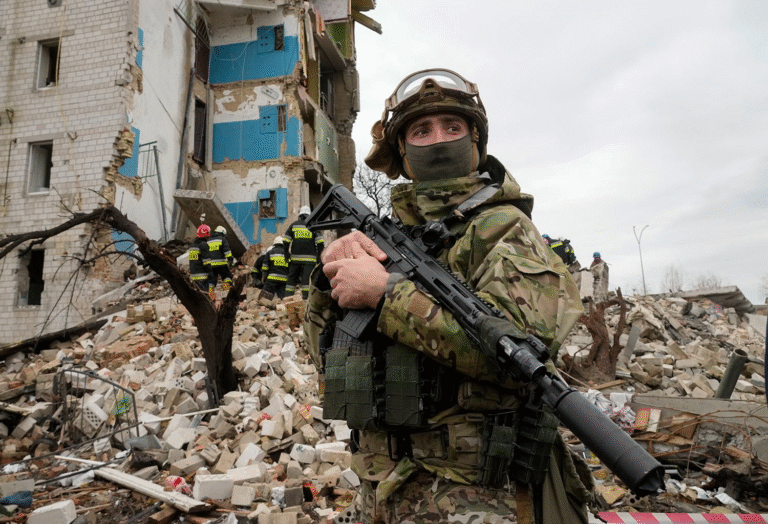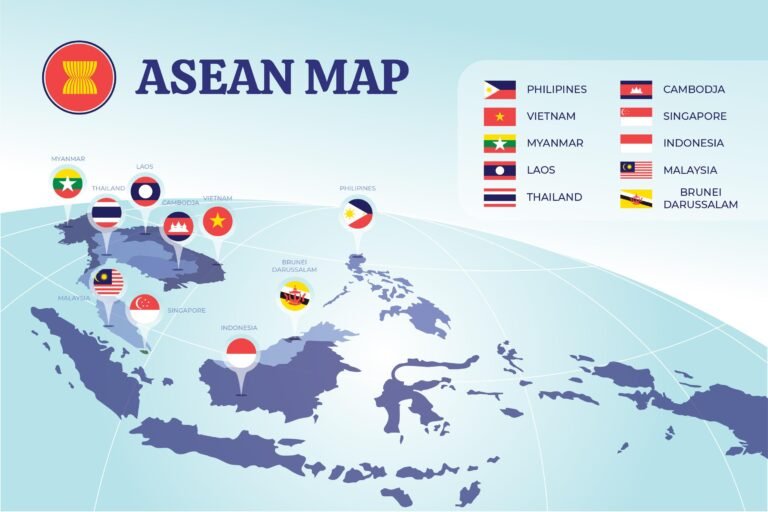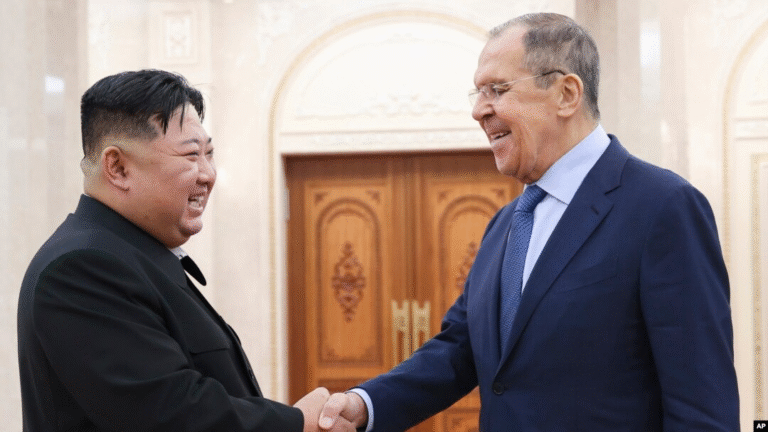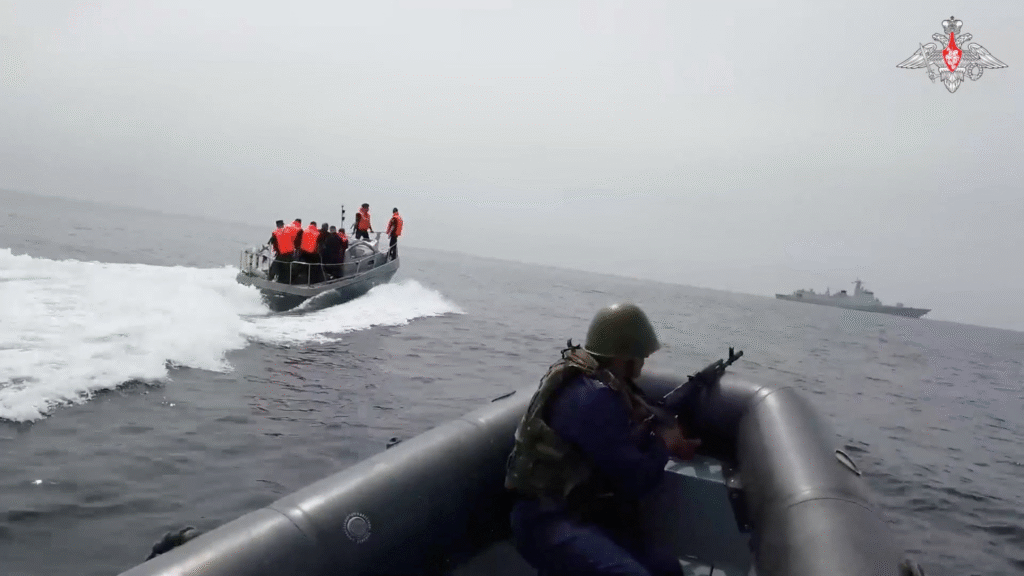
China, Russia to Start Joint Air and Sea Drill in Sea of Japan
Photo Credit: Reuters
Terry Li
The America-Eurasia Center
East Asia Program
www.EurasiaCenter.org
The America-Eurasia Business Coalition
www.usebc.org
China tries to Contain the
Indo Pacific Strategy of the new Quad Alliance
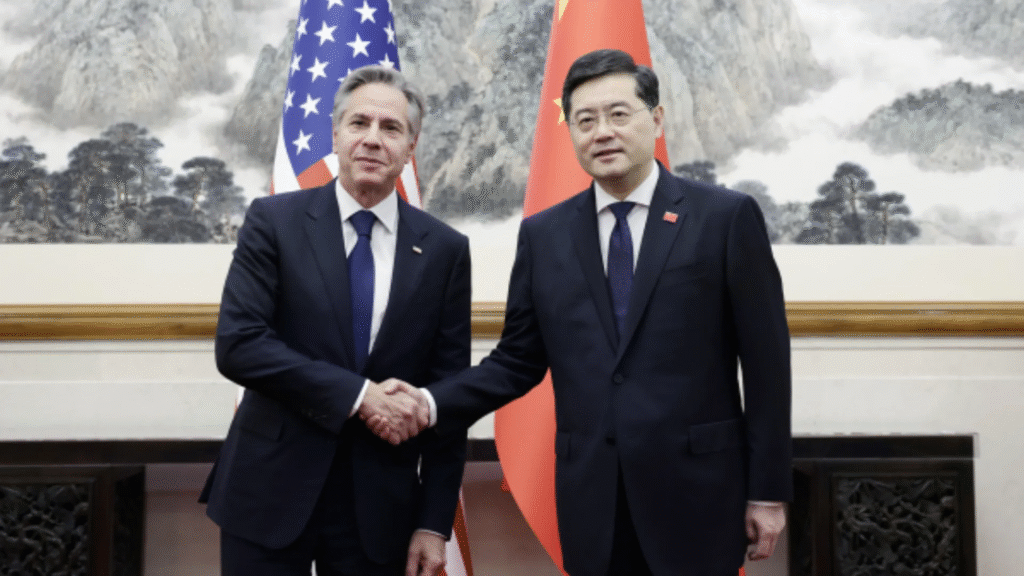
Qing Gang holds talk with U.S Secretary of States Antony Blinken in Indonesia
Photo Credit: Ministry of Foreign Affairs of People’s Republic of China
Over the past few months, China and US have experienced some military frictions in the Southern
China Sea. Just a few weeks before Blinken’s visit, a Chinese destroyer CNS Suzhou cut off the
routine of the U.S. warship Chung-Hoon during the Taiwan Strait. The closest distance between the
two warships was about 150 yards. The act of intervention was considered intentional according to
the U.S. Navy.1 In May, a U.S. RC135 surveillance jet was unprofessionally intercepted by the
PRC AirForce. The J-16 fighter was a few meters close with the RC135 and harassed it with the
engine turbulence.2 U.S. and China have a different recognition of the Southern China Sea. While
the U.S. alleged that the southern China Sea is the international waters, China claimed that most of
the Southern China Sea is its own territory. In the Jakarta meeting, Blinken informed that
Washington would not waver on its commitment to fight for the rule of law and against coercive
actions in the region.3
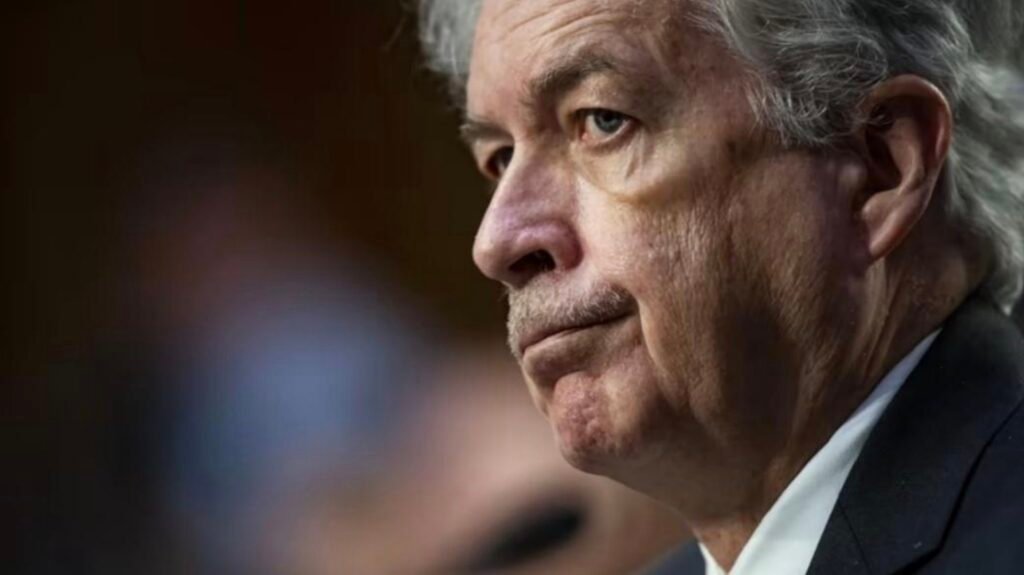
CIA director Bill Burns met counterparts in Beijing, Photo Credit: Bloomberg
China’s aggressive actions in the Southern China Sea caught attention from some countries in
this region. Actively developing infrastructures on the islands in the Southern Pacific represented
China’s determination of defending the islands’ sovereignty. ASEAN countries showed huge
concern of the regions’ stability. It is obvious to conclude that China has its own political intention
in the Southern China Sea. China also aimed to promote the economic and trade interactions. This
is not contradicted to U.S. interest in the Indo-Pacific. But the U.S. priority was to affirm freedom
of the seas and build shared regional support for open access to the South China Sea – a throughway
for nearly two-thirds of global maritime trade and a quarter of all global trade.4 The U.S. hold the
perspective that the freedom in this region is the prerequisite of enhancing economic development
and trade cooperation with its ASEAN partners. The hosting state president of Indonesia called for
solutions to regional and world problems instead of exacerbating them.5
In the U.S. National Security Strategy, the Biden Administration pointed out that the U.S. has
maintained a strong and consistent defense presence, affirming the commitments to the Indo-Pacific
treaty allies. The U.S. will continue to modernize alliances with Australia, Japan, the Republic of
Korea, the Philippines, and Thailand.6 U.S. foreign policy is demanding more in the Indo-Pacific
than any period in the past. In 2007, the Quadrilateral Security Dialogue (Quad) was initiated under
the support of Japan Prime Minister Shinzo Abe and Vice U.S. President Dick Cheney. The nonformal alliance composed of the U.S., Australia, India, and Japan, has intensified the security and
economic ties as tensions with China rise.7 To restrain China’s assertive behaviors in the region, a
more constructive cooperation including military exercises was put on the agenda. In the 2020,
navies from four countries participated in the first joint exercise in the South Pacific Sea. Both
president Trump and Biden emphasized the importance of this alliance to restrain China’s growing
ambitions in the Southern Pacific.
U.S. in keep looking for allies in the Indo-Pacific region. On September 10, 2023, the U.S. elevated
its relationship with Vietnam to a comprehensive strategic partnership.8 U.S. president Joe Biden
visited Hanoi and met with Vietnam’s Prime Minister Pham Minh Chinh in Hanoi. The two leaders
discussed details of cooperations in economic, trade, science & technology, education etc. Vietnam
pursued a “multidirectional foreign policy” and had a comprehensive strategic partnership with
both China and Russia. This unprecedent elevation in diplomatic relation with the U.S. is a signal
to booster military-to-military ties which aimed to address China’s increasing aggression in the
Indo- Pacific Region.9

U.S. President Joe Biden meets with Vietnam’s Prime Minister Pham Minh Chinh in Hanoi Vietnam, September 11, 2023,
Photo Credit: Evelyn Hockstein/Reuters, Council on Foreign Relations
As the U.S. actively engaged in the Indo-Pacific region to restrain China’s aggression, Beijing
decided not to create a head-to-head collision with the U.S. in the Southern Pacific. The tension
was already and high and unpredictable. Beijing shifted its focus to the North and search for
feasible cooperation with one of the most reliable allies, Russia.
Although China’s political stance and attitude to the Russia-Ukraine war is quite opaque, the
China Russia relation has gone through ups and down over the past few decades. The cooperation
between China and Russia is widespread in various perspective including oils, economics &trade,
infrastructures, military etc. Starting from June 2023, the Chinese and Russian Navy launched the
join exercise in the Pacific. This naval exercise aimed to safeguarding the security of strategic
waterways according to China’s defense ministry.10
The joint Navy crossed the Sea of Japan and came along the North Pacific Region and reached
the nearshore of Alaska at the Aleutian Island in the end. This move was not targeted at
Washington, according to one Chinese spokesman.11 The routine China Russia Naval patrol had
nothing to do with the current international and regional situations. This military exercise echoed
President Xi’s visit to Moscow in March 2023. During the meeting with Russian President Putin,
Xi pointed out that the joint maritime exercise could enhance the naval cooperation and stabilize
the regional security.
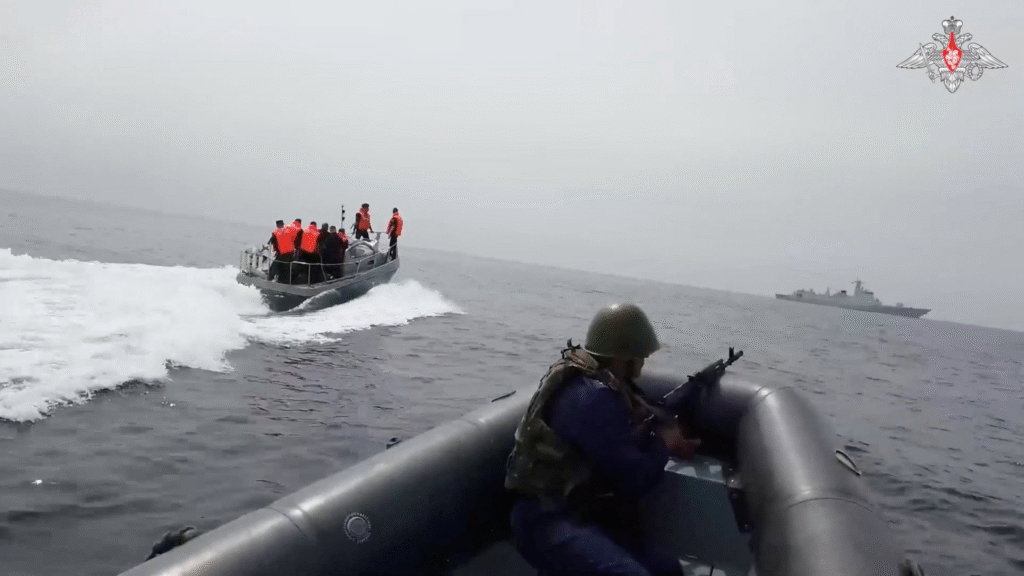
The joint exercise enhanced and deepened China and Russia naval cooperation. Experts
believed this exercise is a very forceful respond to the trilateral drilled conducted by the U.S. and
its allies because the Sea of Japan is a very crucial pathway for naval warships to go through the
Pacific. According to military expert Lin Ying-yu, Beijing wanted to learn from Moscow’s
experience of countering attacks on their navy from land in the Ukraine war.12 Some experts
considered that this is an act of support to Russia in the Russia-Ukraine War.
U.S. engagement with the Quad members and the new foreign relation with Vietnam has showed
its determination of promoting a free & open Indo-Pacific and addressing & restraining China’s
aggression in the region. Beijing slowed down the steps and shifted the focus to the North,
cooperation with Russia to avoiding straightforward collision with the U.S. China and U.S. have
different recognitions in lot of international affairs including the Taiwan issue, South China Sea,
Hong Kong etc. The Indo-Pacific Region is now one of the frontlines concentrating the U.S. and
China together. Whether China and U.S. would keep this tension or reach consensus on some issues
is unknown. The way of addressing the challenges for both U.S. and China will be a very crucial
part for the future of the Indo-Pacific Region.
- Sam LaGrone, “Video: Chinese Warship Harasses U.S. Destroyer in Taiwan Strait Transit,” USNI News, June 5, 2023, https://news.usni.org/2023/06/03/u-s-canadian-warships-transit-taiwan-strait. ↩︎
- Oren Liebermann and Haley Britzky, “US Says Chinese Jet Conducted ‘unnecessarily Aggressive Maneuver’ Intercepting Us Spy Plane over South China Sea | CNN Politics,” CNN, May 31, 2023,
https://edition.cnn.com/2023/05/30/politics/china-fighter-jet-south-china-sea/index.html. ↩︎ - Edna Tarigan, David Rising, and Jim Gomez, “Blinken Meets Wang Yi in Indonesia. but the Region Remains Wary of the US-China Rivalry,” AP News, July 14, 2023, https://apnews.com/article/blinken-wang-yi-asean-southeast-asia50f50a223fb946899398d3dbd53bfeb6. ↩︎
- Biden-Harris Administration’s national security strategy – the white house, accessed September 15, 2023,
https://www.whitehouse.gov/wp-content/uploads/2022/10/Biden-Harris-Administrations-National-Security-Strategy10.2022.pdf. ↩︎ - Edna Tarigan, David Rising, and Jim Gomez, “Blinken Meets Wang Yi in Indonesia. but the Region Remains Wary of the US-China Rivalry,” AP News, July 14, 2023, https://apnews.com/article/blinken-wang-yi-asean-southeast-asia50f50a223fb946899398d3dbd53bfeb6. ↩︎
- Biden-Harris Administration’s national security strategy – the white house, accessed September 15, 2023,
https://www.whitehouse.gov/wp-content/uploads/2022/10/Biden-Harris-Administrations-National-Security-Strategy10.2022.pdf. ↩︎ - “The Quad in the Indo-Pacific: What to Know,” Council on Foreign Relations, accessed September 16, 2023,
https://www.cfr.org/in-brief/quad-indo-pacific-what-know. ↩︎ - “Joint Leaders’ Statement: Elevating United States-Vietnam Relations to a Comprehensive Strategic Partnership,” The White House, September 11, 2023, https://www.whitehouse.gov/briefing-room/statementsreleases/2023/09/11/joint-leaders-statement-elevating-united-states-vietnam-relations-to-a-comprehensivestrategic-partnership/. ↩︎
- “Assessing the Bolstered US-Vietnam Relationship,” Council on Foreign Relations, accessed September 16, 2023, https://www.cfr.org/blog/assessing-bolstered-us-vietnam-relationship. ↩︎
- Yew Lun Tian, “China, Russia to Start Joint Air and Sea Drill in Sea of Japan,” Reuters, July 16, 2023,
https://www.reuters.com/world/china-russia-start-joint-air-sea-drill-sea-japan-2023-07-16/. ↩︎ - Al Jazeera Staff, “US Deployed Warships after China, Russia Naval Patrol near Alaska: WSJ,” News | Al Jazeera, August 7, 2023, https://www.aljazeera.com/news/2023/8/7/us-deployed-warships-after-china-russia-naval-patrolnear-alaska-wsj. ↩︎
- William Yang, “China-Russia Exercise Seen as Sign of Deepening Cooperation,” VOA, July 21, 2023,
https://www.voanews.com/a/analysts-see-china-russia-exercise-as-sign-of-deepening-cooperation/7188482.html. ↩︎
